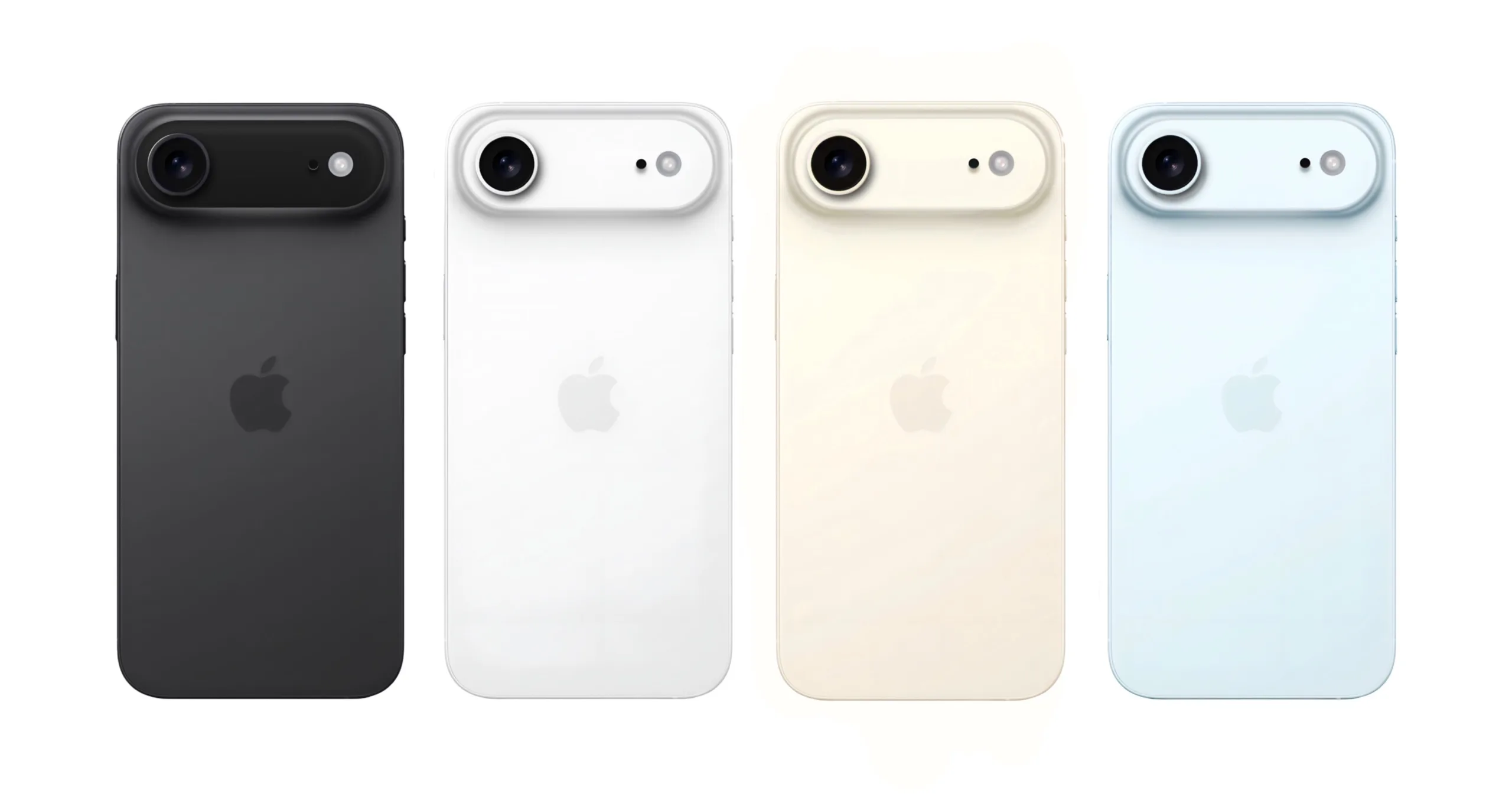The iPhone 17 Air is creating waves in the tech world, promising to be Apple’s slimmest smartphone yet. With a sleek design, cutting-edge features, and a focus on portability, the iPhone 17 Air is poised to redefine what users expect from a premium smartphone. As leaks and rumors swirl across platforms like X, this article dives into the trending news about the iPhone 17 Air, exploring its design, specs, and potential impact. Here’s everything we know so far about this ultra-thin marvel.
What Is the iPhone 17 Air?
The iPhone 17 Air is rumored to be a new addition to Apple’s 2025 iPhone lineup, designed to replace the Plus model with an ultra-thin form factor. Unlike the standard iPhone 17, Pro, or Pro Max, the Air prioritizes a lightweight, slim design while maintaining high-end performance. Recent leaks suggest it will feature a 5.5mm thin body, a 6.6-inch 120Hz OLED display, and a single 48MP camera, making it a unique offering in Apple’s portfolio. The iPhone 17 Air aims to blend portability with advanced technology, appealing to users who value style and functionality.
iPhone 17 Air Design: Slimmer Than Ever
A Game-Changing Ultra-Thin Body
The standout feature of the iPhone 17 Air is its 5.5mm ultra-thin design, making it one of the slimmest smartphones ever produced. Leaked images and dummy units shared on X highlight its sleek profile, which could set a new standard for smartphone aesthetics. This thinness is a significant departure from the bulkier designs of previous iPhones, offering a lightweight feel that’s perfect for one-handed use. Despite its slim build, Apple is expected to maintain durability with premium materials like titanium or aluminum and a reinforced glass back.
Dynamic Island and Camera Placement
Leaked screen protectors and dummy units suggest a design tweak for the iPhone 17 Air, with the front camera potentially positioned to the left of the Dynamic Island. This change could optimize screen space and enhance the user experience for notifications and app interactions. The ultra-thin chassis may also influence thermal management, with Apple reportedly exploring innovative cooling solutions to maintain performance without adding bulk.
iPhone 17 Air Display: Bigger and Smoother
6.6-Inch 120Hz OLED Display
The iPhone 17 Air is expected to feature a 6.6-inch OLED display with a 120Hz refresh rate, delivering vibrant colors and smooth scrolling. This larger screen size, compared to the standard iPhone 17’s 6.3-inch display, makes the Air ideal for media consumption, gaming, and multitasking. The ProMotion technology ensures fluid animations and responsiveness, while the high brightness (up to 2,000 nits) guarantees visibility in bright environments. Posts on X have praised the display’s potential, with users excited about its immersive qualities.
Concerns About Durability
With such a thin design, questions arise about the iPhone 17 Air’s durability. Apple is likely to use advanced glass technology, such as Ceramic Shield, to protect the display. However, the ultra-thin body may require compromises, such as a smaller battery or simplified internal components, to maintain structural integrity. Fans on X have expressed both excitement and skepticism about how Apple will balance thinness with durability.
iPhone 17 Air Performance: Powered by the A19 Chip
A19 Chip for Next-Level Speed
The iPhone 17 Air is rumored to be powered by the A19 chip, built on a 3nm process for improved efficiency and performance. While the Pro models may get an A19 Pro chip, the A19 in the Air is expected to handle everyday tasks, gaming, and AI-driven features with ease. This chipset offers a significant upgrade over the A18 chip used in the standard iPhone 17, ensuring the Air remains competitive despite its slim design. The improved neural engine will also enhance machine learning tasks, such as real-time photo processing and voice recognition.
Battery Life Concerns
One potential drawback of the iPhone 17 Air’s ultra-thin design is its 3,220mAh battery, which is smaller than those in other iPhone 17 models. Posts on X have raised concerns about battery life, with some users worried it may struggle to last a full day under heavy use. Apple is expected to optimize power efficiency through the A19 chip and iOS 19, but the smaller battery capacity could be a limiting factor for power users.
iPhone 17 Air Camera: Quality Over Quantity
Single 48MP Camera
Unlike the multi-camera setups on the Pro models, the iPhone 17 Air is expected to feature a single 48MP rear camera. This high-resolution sensor, paired with Apple’s computational photography, promises stunning photos with rich detail and accurate colors. The ultra-thin design may limit the inclusion of additional lenses, but the 48MP camera is likely to support features like 4K video recording and Night Mode. The front camera, expected to be 24MP, will support FaceTime and selfies with improved low-light performance.
AI-Powered Photography
Apple’s focus on AI will enhance the iPhone 17 Air’s camera capabilities. Features like Smart HDR, Portrait Mode, and advanced video editing tools (similar to Audio Magic Eraser) are expected to make the Air a favorite among content creators. While it may lack the telephoto lens of the Pro models, the single camera’s versatility will appeal to users prioritizing simplicity and quality.
iPhone 17 Air Features and Software
iOS 19 and AI Enhancements
The iPhone 17 Air will ship with iOS 19, introducing new AI-driven features to enhance productivity and creativity. Rumored additions include improved Siri capabilities, real-time language translation, and enhanced photo editing tools. The ultra-thin design makes the Air ideal for on-the-go use, with iOS 19 optimizing the 6.6-inch display for multitasking and app management. Apple’s focus on privacy will ensure that AI processing occurs on-device, maintaining user security.
Connectivity and 5G
The iPhone 17 Air is expected to support 5G connectivity for fast downloads and streaming. Apple may also introduce Wi-Fi 7 for improved wireless performance. Posts on X suggest that the Air could include satellite connectivity for emergency messaging, a feature already present in recent iPhone models, though this remains unconfirmed.
iPhone 17 Air vs. Other Models
How It Stacks Up
The iPhone 17 Air sits between the standard iPhone 17 and the Pro models in Apple’s lineup. Compared to the iPhone 17 (6.3-inch display, A18 chip), the Air offers a larger screen and a more advanced A19 chip. However, it falls short of the iPhone 17 Pro and Pro Max, which feature larger displays (6.3-inch and 6.9-inch), A19 Pro chips, and triple-camera systems. The Air’s ultra-thin design and single-camera setup make it a unique choice for users prioritizing portability over Pro-level features.
Replacing the Plus Model
The iPhone 17 Air is rumored to replace the iPhone 16 Plus, which has struggled to compete with the Pro models. Posts on X suggest the Air’s sleek design could make it a bestseller, potentially outselling the Plus due to its innovative form factor. Its combination of a large display and lightweight build appeals to users seeking a balance between size and portability.
iPhone 17 Air: Potential Challenges
Battery Life and Thermal Management
The 3,220mAh battery has sparked debate among fans, with some on X predicting a “battery life collapse” due to the ultra-thin design. Apple will need to address these concerns through software optimization and efficient hardware. Thermal management is another challenge, as the slim chassis may limit cooling capabilities. Apple’s expertise in chip design and thermal solutions will be critical to ensuring the Air performs reliably.
Pricing and Availability
While pricing details are speculative, the iPhone 17 Air is expected to be priced between the standard iPhone 17 and the Pro models, likely starting around $999. The launch is anticipated for September 2025, following Apple’s typical release schedule. Pre-order details and availability will likely be announced during Apple’s fall event.
Why the iPhone 17 Air Matters
The iPhone 17 Air represents Apple’s bold push into ultra-thin smartphones, competing with devices like the Samsung Galaxy Z Fold7. Its sleek design, large display, and powerful A19 chip make it a compelling option for users who want a premium experience without the bulk of Pro models. While battery life and thermal concerns linger, Apple’s track record suggests it can deliver a balanced device that appeals to a wide audience.

